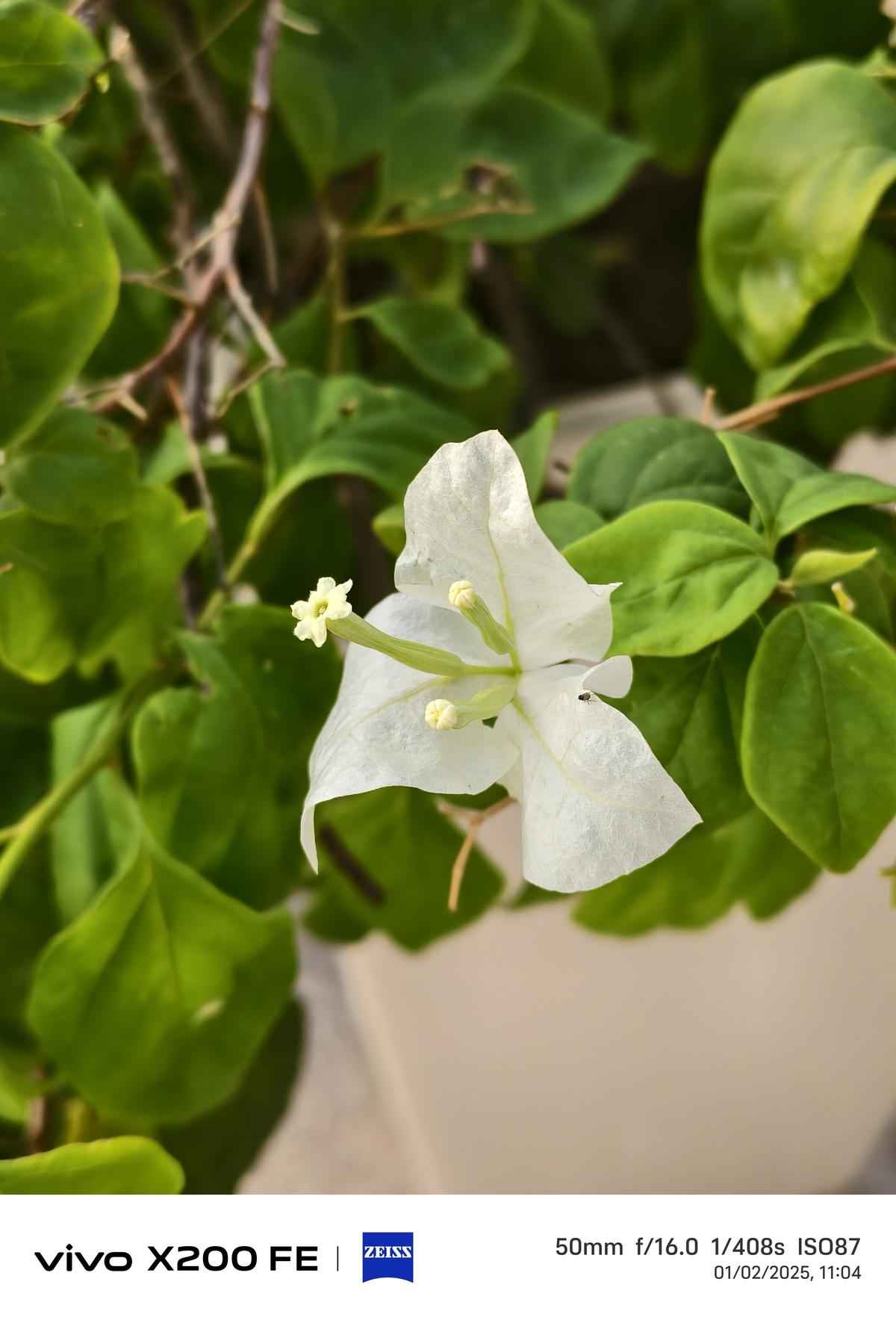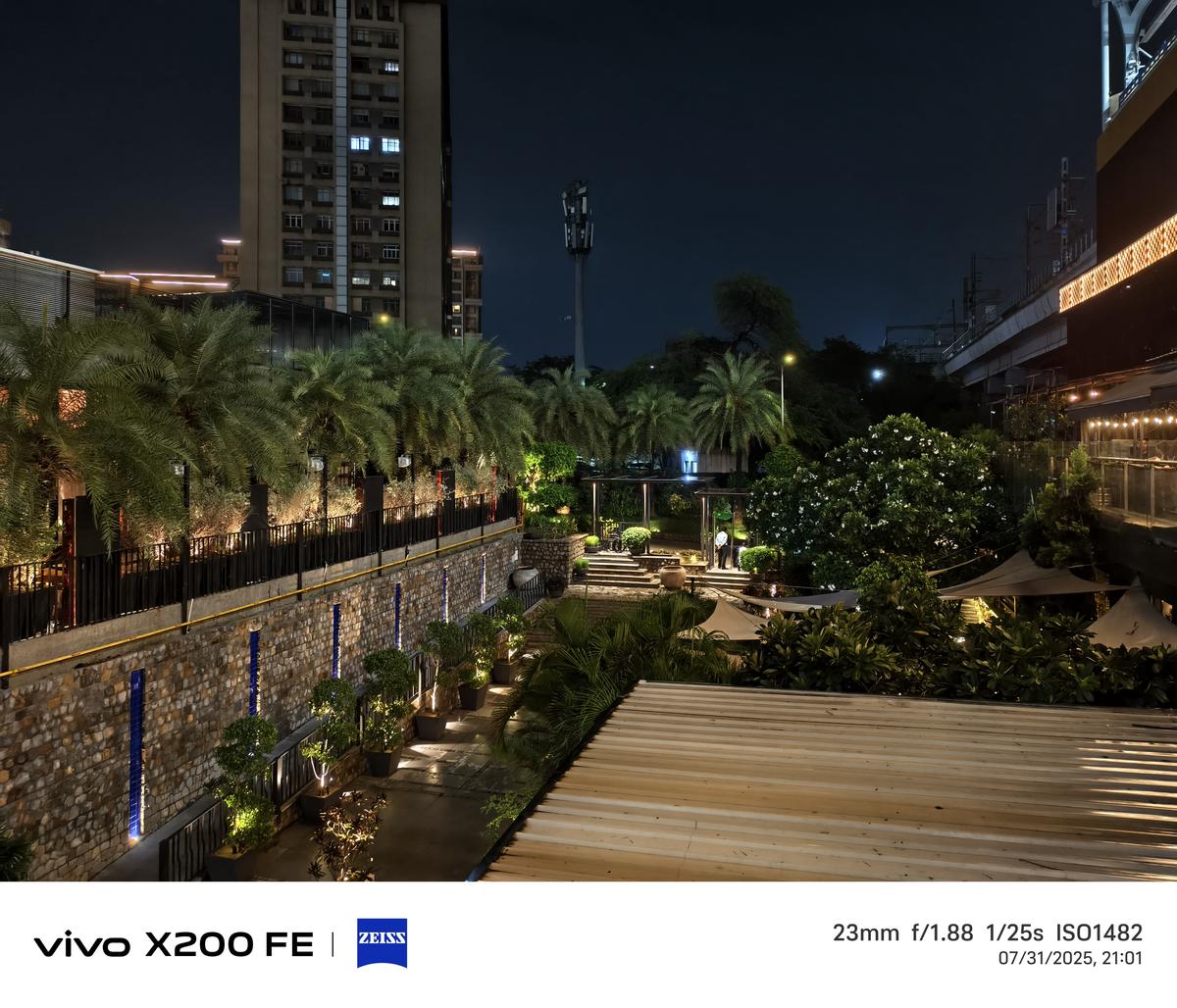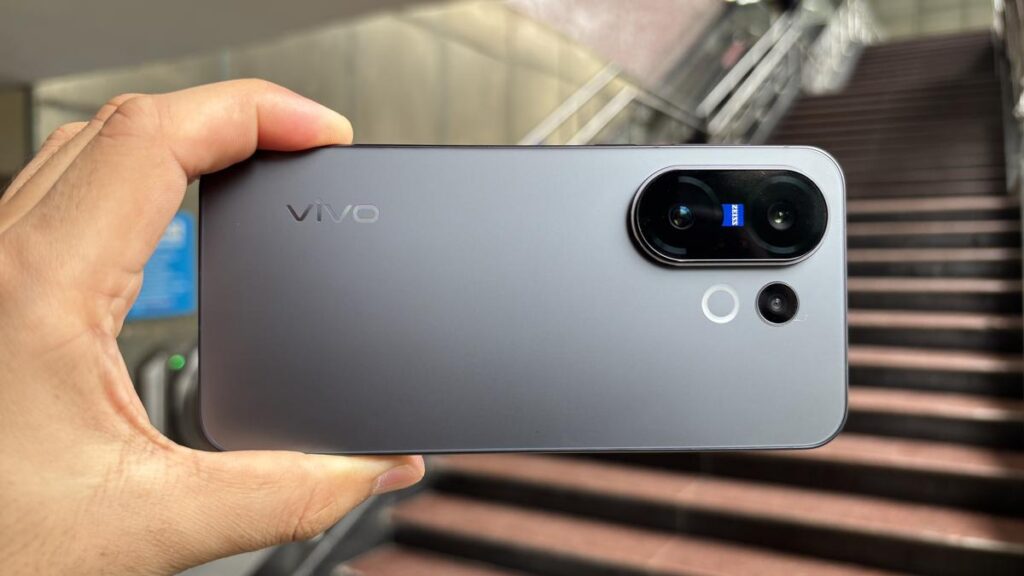970x125
The compact flagship smartphone segment is picking up its pace, and personally, I am liking it. Earlier, the vanilla variants of Apple, Samsung, and to some extent Google occupied this space, but the scenario is changing post the entry of the OnePlus 13s. And now, Vivo has also joined this race with the launch of the Vivo X200 FE. Just to give you context, the 200 series of the company relied on its camera prowess, and we are expecting the same in this new compact variant. But beyond the cameras, how does the new Vivo X200 FE fare in the competition? Let’s find that out.
970x125
Reader’s tip: The phone starts at ₹54,999, same as the OnePlus 13s.
Design
From the front, the Vivo X200 FE looks almost identical to the OnePlus 13s, especially the Luxe Grey variant. Both sport symmetrical bezels, a flat screen, and a punch-hole front camera, making them nearly indistinguishable unless you flip them over. That’s where Vivo takes its own route. The Luxe Grey variant we tested comes with a soft matte glass back that feels refined and subtly premium. The black aluminium frame adds a sleek contrast, though the finish makes it slightly slippery, a case is highly recommended.
In hand, the phone feels compact and lightweight at 186 grams, just a gram more than the OnePlus 13s. The form factor is balanced and ergonomic, making it a joy to use one-handed. Interestingly, while OnePlus replaces its iconic alert slider with the Plus Key, Vivo opts to keep the frame clean and simple — no extra buttons here. On the right, you get the power and volume buttons, and the bottom hosts the USB-C, speaker grille, and SIM tray.
(For top technology news of the day, subscribe to our tech newsletter Today’s Cache)
Up front, the display stretches edge to edge with slim bezels and is protected by Schott Xensation glass. The phone is also rated IP68 and IP69, offering better dust and water resistance than both the OnePlus 13s (IP65) and Pixel 9a (IP68), making the X200 FE one of the most durable options in this compact flagship bracket.
Display
The Vivo X200 FE features a 6.31-inch LTPO AMOLED panel with a 2640×1216 resolution and a 120 Hz refresh rate. It boasts a local peak brightness of 5,000 nits. Whether you’re under direct sunlight or bingeing Netflix at night, this panel delivers. It’s also a 10-bit display with P3 colour gamut support and HDR10+, making content consumption a treat.
Compared to the OnePlus 13s’ ProXDR display (1,600 nits peak) and Pixel 9a (2,700 nits), the X200 FE is miles ahead in brightness. Add to that the optical fingerprint sensor, solid contrast, and responsive touch (with glove mode support), and you’re looking at a top-tier panel that easily competes with the best in the segment.
OS and AI
Running on Funtouch OS 15 based on Android 15, the X200 FE delivers a clean, relatively bloat-free experience. There are a few pre-installed apps, but most can be disabled. The UI is snappy, though the app drawer layout could use a bit more refinement. Compared to OnePlus’s OxygenOS or Google’s stock Android, Funtouch feels slightly more traditional.
Vivo has also integrated smart AI features like AI Transcript Assist, live call translation, DocMaster, and Notes AI Assistant. It even supports Circle to Search and Screen Translation, similar to what you’d find on Pixel or OnePlus AI offerings. It may not be as tightly woven as Google’s AI experience or as bold as OnePlus’s AI Plus Mind, but it offers plenty of useful tools that enhance productivity.
Performance
The Vivo X200 FE is powered by the MediaTek Dimensity 9300+ paired with up to 16 GB of LPDDR5X RAM and 512 GB UFS 3.1 storage. While UFS 3.1 is slightly dated compared to the OnePlus 13s’ UFS 4.0, in real-world use, the difference is minimal for most users.
The latest Vivo X200 FE trails behind the Snapdragon 8 Elite-powered OnePlus 13s, and the benchmark scores confirm it: Geekbench single-core stands at 2182 vs 2862, multi-core at 7134 vs 8418, AnTuTu at 1,981,630 vs 2,408,425, and GPU at 14,862 vs 17,923.
Still, everyday usage is smooth. App launches, multitasking, and scrolling are seamless. Unless you’re comparing side by side or doing heavy video editing on your phone, you likely won’t feel the performance gap.
When it comes to gaming, the X200 FE does surprisingly well. It handled BGMI at 40FPS on max settings and Call of Duty: Mobile at a consistent 60FPS. The phone does heat up slightly during longer sessions, which can impact sustained performance. It’s not as thermally efficient as the OnePlus 13s, but it holds up well for casual and moderate gaming.
Camera
Staying true to the X-series DNA, the Vivo X200 FE brings a camera experience that truly sets it apart in the compact flagship space. It features a versatile triple-lens setup: a 50 MP Sony IMX921 main sensor with OIS, an 8 MP ultrawide camera, and a 50 MP Sony IMX886 periscope lens offering 3x optical zoom. On the front, there’s a 50 MP autofocus selfie camera with a wide 20mm field of view.
Vivo X200 FE camera sample
| Photo Credit:
Haider Ali Khan
In everyday use, the main sensor delivers vibrant, detail-rich images with excellent dynamic range and accurate exposure, often producing results that feel ready for sharing without any editing. Compared to the OnePlus 13s, which leans toward more neutral and balanced tones, the X200 FE brings out punchier colours and a slightly deeper contrast, giving photos a livelier, more expressive look.

Vivo X200 FE camera sample
| Photo Credit:
Haider Ali Khan
The periscope lens is another highlight, portrait shots benefit from Zeiss-style multifocal options that let you shoot at varying focal lengths, with sharp subject isolation and elegant background blur. Against the Pixel 9a, the X200 FE holds its own in detail and sharpness, though Google’s edge in skin tone accuracy and true-to-life colour rendering still shines through in certain scenes.

Vivo X200 FE camera sample
| Photo Credit:
Haider Ali Khan
Low-light performance is equally strong. The X200 FE captures sharp, well-lit night shots, with good control over light sources and minimal noise. It does lean toward saturated hues, especially in night mode, but it handles exposure better than the Pixel 9a in challenging conditions and pulls ahead of the OnePlus 13s in overall clarity and detail retention. The ultra-wide lens is serviceable, though it doesn’t quite match the main sensor’s finesse, detail levels dip, and sharpness falls short of what the Pixel 9a manages in wide-angle shots.
Selfies, meanwhile, are crisp and wide, thanks to the high-res 50 MP front sensor. Compared to the OnePlus 13s, the X200 FE captures more facial detail, though both tend to soften textures slightly. Pixel 9a still delivers the most colour-accurate selfies, but the X200 FE impresses with its clarity and field of view. For video, 4K at 60fps support is available on most lenses, with solid stabilisation and pleasing colour output.
Battery
The phone comes packed with a 6,500 mAh battery. With 90W fast charging, it goes from 20% to 100% in about 45-55 minutes. In real-world usage, you can expect 8+ hours of screen time, even with heavy use. When compared to the OnePlus 13s (5,850 mAh, 80W) and Pixel 9a (5,100mAh, 23W), Vivo leads on both capacity and charging speed. However, efficiency could be better. The phone drops 25% in a 2-hour heavy usage test, slightly worse than the OnePlus 13s. Still, battery life is more than enough for a full day, and casual users might even stretch it to two.
Verdict
The Vivo X200 FE makes a strong case for itself in the compact flagship space. As mentioned above, it doesn’t outgun the OnePlus 13s in raw performance, but it brings something unique, arguably the best camera system in the segment, a massive battery, and flagship-grade durability amalgamated in a premium design.
So, to answer the question, beyond cameras, how does the X200 FE fare? Exceptionally well. If you’re looking for a phone that nails the compact experience without major trade-offs, the Vivo X200 FE belongs on your shortlist.
970x125

